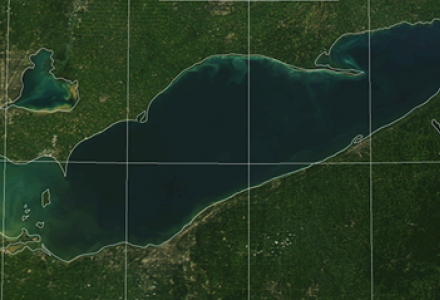

Pictures of the Great Lakes basin taken from outer space impress us with the geographic scope and international character of this critical freshwater resource. Seeing the lakes at this scale encourages us to think about the Great Lakes as an international resource, and we turn to institutions like the IJC and Canadian and US governments for policy leadership. Yet, many residents of the basin do not think about the Great Lakes on this scale.
As summer approaches, residents of the Great Lakes will flock to favorite lakeshore communities. The cities and local governments on the lakes are the front lines in protection and restoration efforts to keep the lakes healthy for consumption, recreation and commerce. For this reason and many others, we must invest more time and effort preparing local governments to exercise leadership in Great Lakes water protection efforts.
For almost 30 years, the Great Lakes Water Quality Agreement has contained provisions for the remediation of Areas of Concern (AOC) – places where pollution severely degraded the local lake ecosystem and cleanup was essential. When these AOCs were established, local public advisory committees worked with citizen groups and government agencies to develop Remedial Action Plans to clean up environmental damage and improve future water quality.
Shortly after the establishment of AOCs, various policy analyses pointed to the importance of local governments in successful remediation efforts. Now, as more AOCs near the process of “delisting,” or completing their Remedial Action Plans, local governments can provide several lessons about Great Lakes protection.
With support from CSF Associates and the Student Engagement Fund at Northern Illinois University (NIU), a team of students identified the types of actions undertaken in AOCs with high levels of reported local government involvement. These investigations identified several examples, including:
- In the Waukegan Harbor AOC, the city of Waukegan has engaged with the community in a series of planning discussions about the future of economic development and the lakefront, as well as beach management.
- In the St. Mary’s River AOC, the city of Sault Ste. Marie, Michigan, used funds from the Great Lakes Restoration Initiative to partner with other government agencies to improve habitat at Sherman Park.
- In the Saginaw Bay/River AOC, local governments agreed to ban the use of phosphorous fertilizer sales in 2009 in order to improve bay and river health.
- Duluth, Minnesota, has been engaged in the St. Louis River AOC by working on projects such as trail and habitat restoration.
- Shoreline and habitat restoration also have been the focus of work for the Essex-Amherstburg Greenway project on the Canadian side of the Detroit River AOC.
Local governments appear to be most interested in Great Lakes water protection and remediation when beach closings and habitat restoration have been part of the local Remedial Action Plan. For two reasons, this is an important time to examine the involvement of local governments in AOCs.
First, as AOCs are delisted, local governments will play a critical role in maintaining local environmental quality in the future. Fostering their engagement now might help ensure future capacity and success.
Second, AOCs cover only a limited part of the Great Lakes. Local governments in other parts of the basin might have an interest in Great Lakes protection, but lack good examples from which to learn and apply in their community. Thus, this is an opportune time to invest in local government capacity for Great Lakes water protection.
Many governmental and nongovernment organizations are already working to foster local government involvement in the Great Lakes. The Great Lakes and St. Lawrence Cities Initiative is one of several examples of local government involvement in Great Lakes policy leadership. By learning more about local government engagement in the Great Lakes, environmental studies students at NIU hope to contribute to the ability of local governments to engage in Great Lakes protection efforts. For more information about the NIU project, see a poster on “Local Government Engagement in Great Lakes Areas of Concern.”
Stay tuned to Great Lakes Connection for a report on Areas of Concern in Canada.





